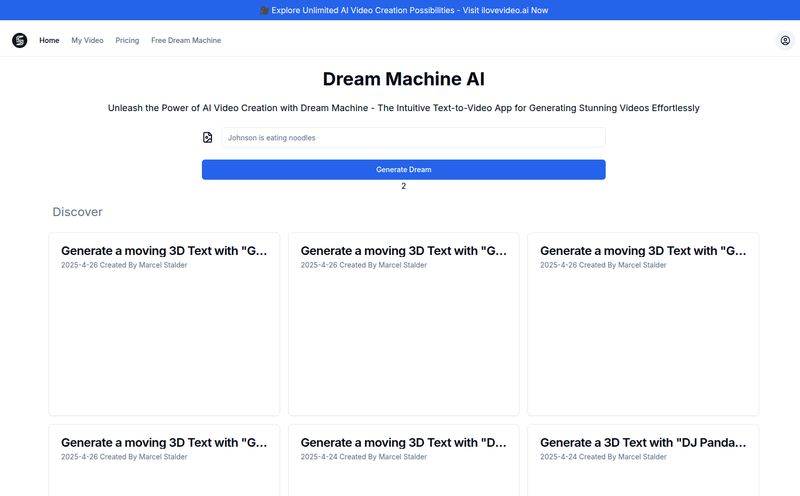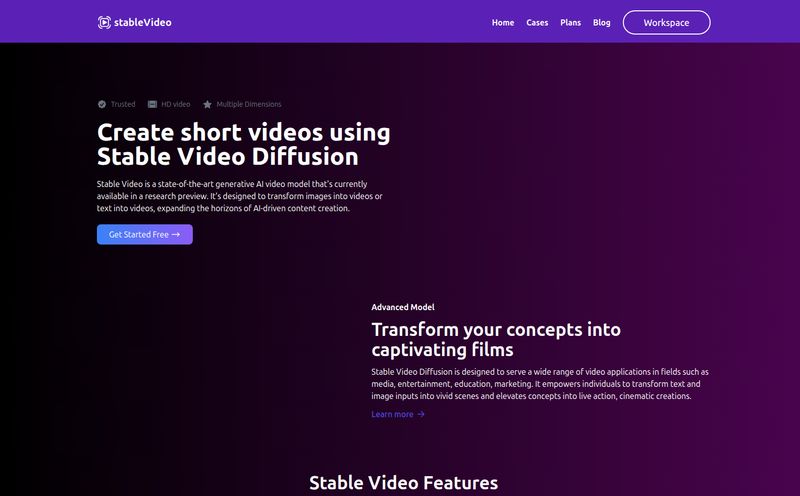I’ve spent more hours of my life than I care to admit wrestling with the clone stamp tool. Moving sliders back and forth by a single pixel. Meticulously tracing paths with the pen tool until my eyes cross. For years, that was just the price of admission for getting the perfect image. It’s a craft, sure, but sometimes... it’s a real pain.
So, when I first heard about a tool that lets you edit images by just typing out what you want, a part of my brain short-circuited. “Turn the car red.” “Add fireworks to the sky.” “Make it look like a Van Gogh painting.” It sounds like pure science fiction, right? Like something you'd ask the computer on Star Trek to do.
Well, welcome to the future, because that's exactly what Instruct Pix2Pix Diffusion promises. And as someone who's been riding the waves of SEO and digital trends for a long time, I can tell you this: the ground is shifting under our feet. This isn't just another filter app. It's a whole new way of thinking about creative control.
What in the World is Instruct Pix2Pix?
Alright, let’s get the nerdy part out of the way, but I'll make it quick. At its core, Instruct Pix2Pix is an AI model that takes an existing image and an instruction (written in plain english) and outputs a new, edited image.
Think of it like having a conversation with your photo editor. Instead of clicking buttons, you just... talk to it. It’s built on something called a “diffusion model,” which is the same family of brainy AI tech that powers those text-to-image generators like Stable Diffusion and Midjourney that have been all over the internet.
The secret sauce here is that the developers trained a special, lightweight model specifically to understand instructions. So you have one part of the AI that's a master artist—it knows what millions of things look like. And you have another part that's the director, telling that artist exactly what to change. It's a pretty brilliant setup.

Visit Instruct Pix2Pix Diffusion
The Good, The Bad, and The AI
No tool is perfect, especially in this wild west of generative AI. I’ve had my fair share of both “wow” moments and “what on earth were you thinking?” moments with this tech. It’s a rollercoaster.
The Magic Wand Moments
The biggest pro is just how intuitive it is. The barrier to entry is practically zero. If you can type a sentence, you can edit a photo. This opens up creative editing to a whole new audience who might be intimidated by traditional software. You can do some genuinely impressive stuff, from simple tweaks like “change the season to autumn” on a landscape photo to complex additions like “add a dragon flying in the background.” For content creators who need to pump out unique visuals fast, this is a game-changer. I've used it to quickly brainstorm different visual styles for a campaign without spending hours mocking them up myself.
When The Spell Fizzles
Now for the reality check. The quality of the final image is completely dependent on the underlying model it was trained on. Sometimes, the AI’s interpretation of your instruction can be... let’s say, literal in the most unhelpful way. I once asked it to “make the man look happier” and it just gave him a terrifyingly wide, toothy grin that looked more like a grimace. It was hilarious, but not exactly usable.
You have to learn to speak its language. This little dance is what people in the industry call prompt engineering. You'll need to experiment with your wording to get the desired result. “Give him a slight, warm smile” works a lot better than “make him happy.” So yeah, it's not always a one-and-done deal.
So, How Much Does This Magic Cost?
This is the question I get all the time. And the answer is a classic SEO favorite: “It depends.”
The Instruct Pix2Pix model itself is often open-source, which is fantastic. You can find it on platforms like Hugging Face, a sort of GitHub for the AI community. But running these powerful models requires some serious computing horsepower—more than your average laptop can handle.
This is where the platform costs come in. Let's use Hugging Face as our example, since it's one of the most common places to access these tools.
- The Free Way: You can often try these models for free on Hugging Face “Spaces.” These are community demos. The catch? They can be slow, you might have to wait in a queue, and sometimes the owner might pause them (as seen with some Pix2Pix-Video spaces). It's great for a test drive, not for reliable work.
- The Hobbyist's Way: For about $9 a month, a Hugging Face PRO account gets you past some of the queues and gives you private spaces to work in. A solid option if you're getting serious.
- The Pro's Way (Paying for Power): This is where you get real control. You can rent dedicated cloud hardware, or “Spaces Hardware,” by the hour. You're not buying the software, you're renting the super-powered computer needed to run it.
| Hardware Tier | Good For | Approx. Hourly Rate |
|---|---|---|
| CPU Upgrade | Basic tasks, faster processing | $0.05 |
| NVIDIA T4 (GPU) | Standard AI image generation | $0.60 |
| NVIDIA A10G (GPU) | Faster, more demanding tasks | $1.00 - $3.15 |
Note: Prices are based on public data from Hugging Face at the time of writing and can change.
For most people experimenting with Instruct Pix2Pix, renting a T4 or A10G GPU for an hour or two is more than enough to get some amazing results without breaking the bank. It's a very different model than the monthly subscription fee of a traditional software suite.
Who Is This Tool Actually For?
I see a few groups really benefiting from this. Content creators and social media managers are the most obvious ones. Need to change the color of a product to match a new branding scheme? Done in seconds. Want to A/B test ten different backgrounds for an ad? Easy.
Artists and designers can use it as a brainstorming partner. It's a fantastic way to quickly visualize an idea before committing to a full-on design. “What if this photo had a more cyberpunk feel?” Type it, see it, and get inspired.
And of course, there are the hobbyists and the terminally curious, like me. It’s just plain fun to play with. Seeing an image bend to your will with just a few words is a genuinely magical feeling that hasn't worn off for me yet.
Frequently Asked Questions about Instruct Pix2Pix
- Is this just like a text-to-image generator?
- Not quite. A text-to-image tool like DALL-E creates a whole new image from scratch based on your text. Instruct Pix2Pix edits an existing image you provide, based on your instructions. It’s about modification, not just creation.
- Do I need to be a programmer to use this?
- Absolutely not. Thanks to platforms like Hugging Face, you can use these models through a simple web interface. You upload a picture, type in a box, and click a button. That's it.
- Can it perfectly edit any part of any image?
- No, it has its limits. It struggles with complex, nuanced edits, especially on things like human hands and faces (a common AI problem). It's also better at stylistic changes or adding/swapping objects than it is at, say, pixel-perfect photo restoration.
- Is Instruct Pix2Pix related to Pix2Pix-Video?
- Yes, they come from the same family tree. They both use the core concept of instruction-based editing. As you'd guess, Pix2Pix-Video applies the same idea to video clips, which is an even more computationally intense task. They are different models for different media types.
- Where can I try Instruct Pix2Pix?
- The best place to start is by searching for “Instruct Pix2Pix” on Hugging Face Spaces. You'll find several community-run demos you can play with right in your browser.
A New Tool in the Box, Not a Replacement
Look, Instruct Pix2Pix is not going to make professional photo editors or graphic designers obsolete overnight. Let's just get that out of the way. The need for a human eye, for nuance, and for true artistic intent is stronger than ever. But to ignore this technology would be a huge mistake.
What we're seeing is the emergence of a powerful new creative partner. It's a tool that can smash through creative blocks, accelerate workflows, and put incredible power into the hands of anyone with an idea. It’s less of a self-driving car and more of a powered exoskeleton for our creativity. And in my book, that's incredibly exciting. Now if you'll excuse me, I have to go try and add a top hat to a picture of my cat.



